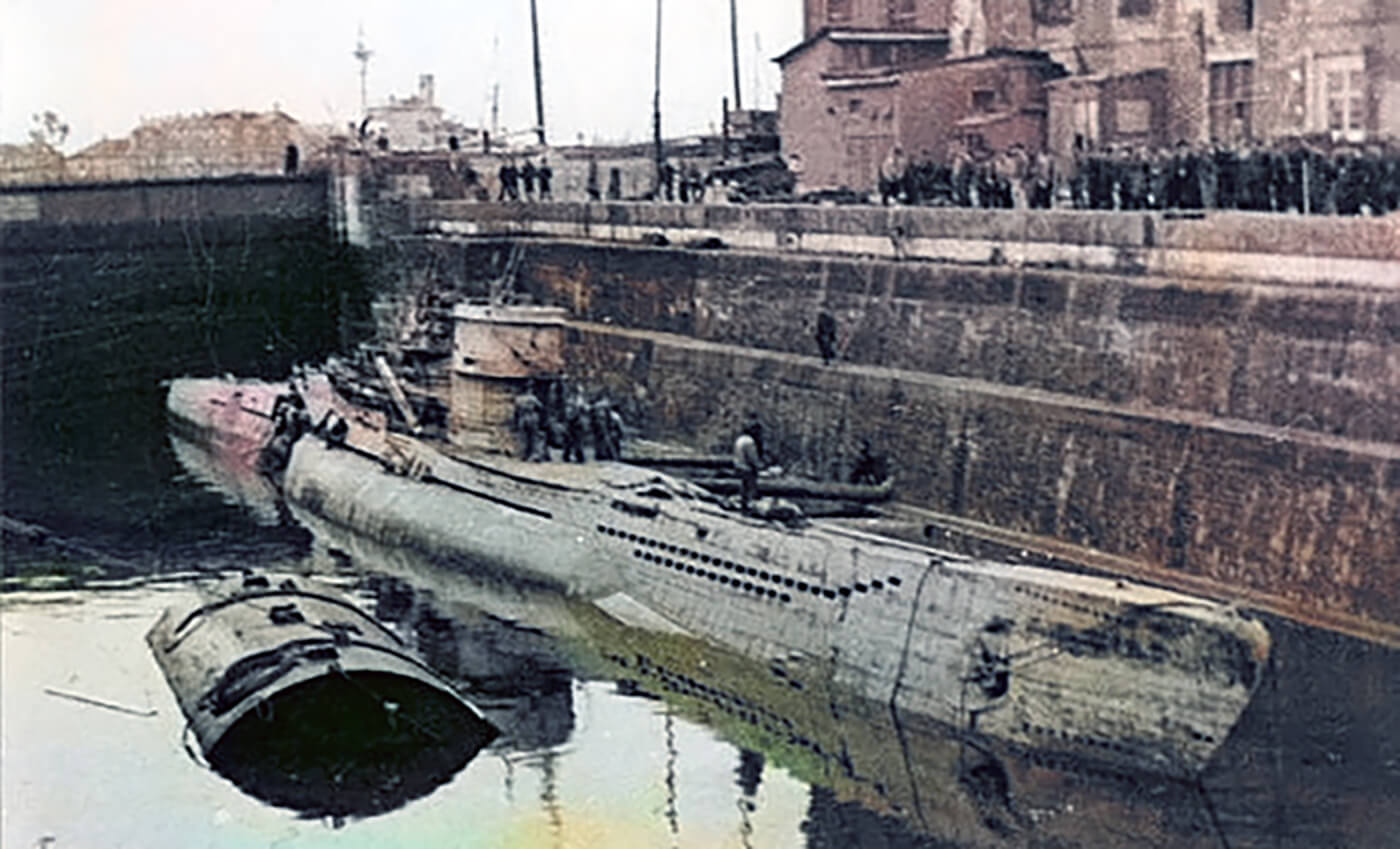On July 30th, 1944, U-250, a German submarine, sinks the Soviet submarine chaser MO-105 in the Gulf of Finland with a torpedo. In response, the Soviet Navy dispatches submarine chasers to search for the U-boat. The MO-103, under the command of SLt Aleksander P. Kolenko, detects U-250 with sonar and attacks it with depth charges.
The U-boat sinks, but the captain, Kapitänleutnant Werner-Karl Schmidt, and five other crew members in the control room manage to escape.
The Russians are eager to salvage the sunken U-boat, which lay at a depth of 27 meters. Despite German and Finnish attempts to prevent the salvage, including attacks by coastal artillery and torpedo boats, the Rota Osobogo Naznacheniya successfully raises U-250 on September 14th, 1944. The submarine is towed to Kronstadt between air tanks and placed in a dry dock on September 25th, 1944. Here the Soviets fins an Enigma codemachine, codes and other valuable information. They also discover the new German secret T5 acoustic torpedo. |

